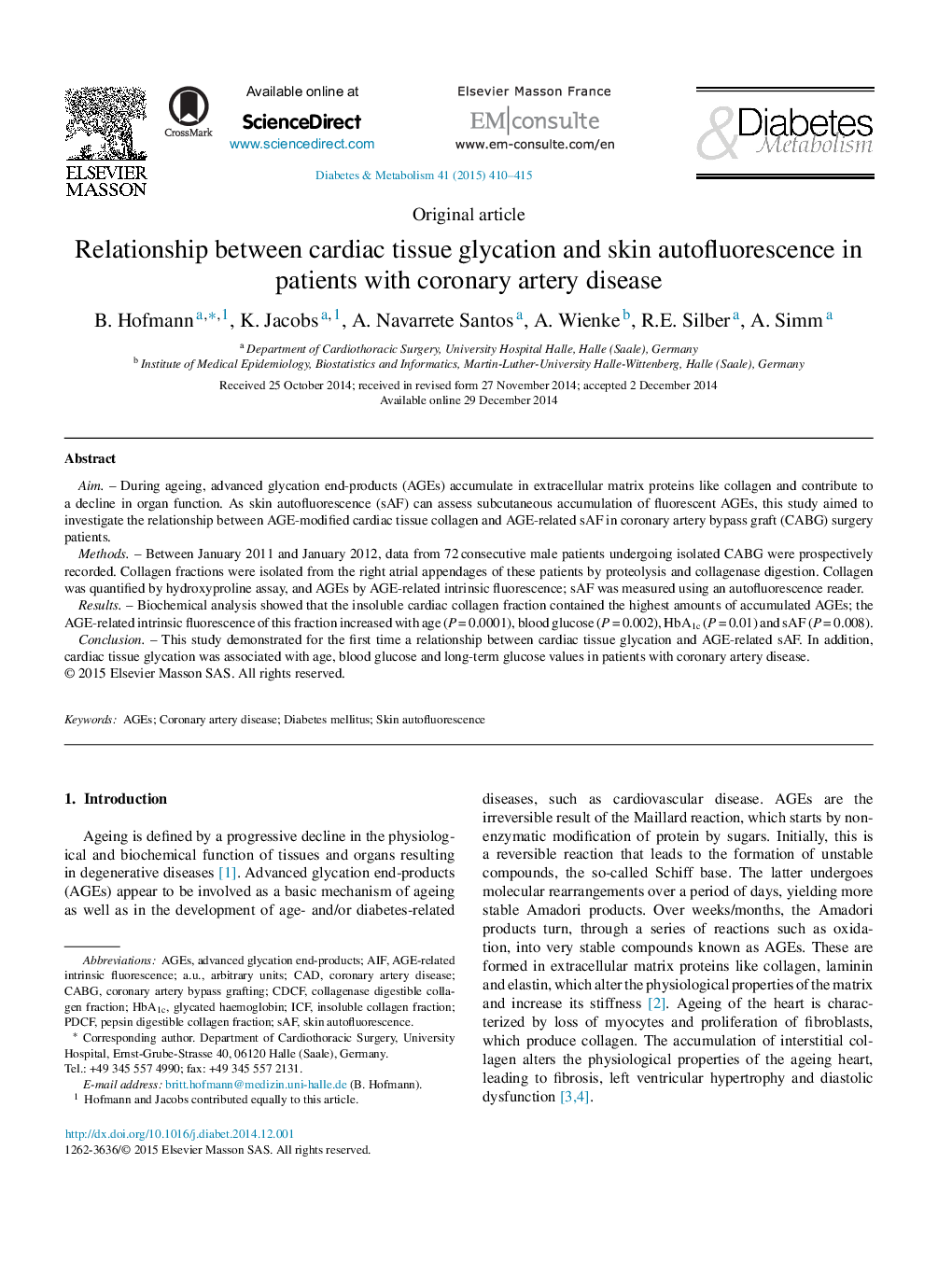| Article ID | Journal | Published Year | Pages | File Type |
|---|---|---|---|---|
| 3259014 | Diabetes & Metabolism | 2015 | 6 Pages |
AimDuring ageing, advanced glycation end-products (AGEs) accumulate in extracellular matrix proteins like collagen and contribute to a decline in organ function. As skin autofluorescence (sAF) can assess subcutaneous accumulation of fluorescent AGEs, this study aimed to investigate the relationship between AGE-modified cardiac tissue collagen and AGE-related sAF in coronary artery bypass graft (CABG) surgery patients.MethodsBetween January 2011 and January 2012, data from 72 consecutive male patients undergoing isolated CABG were prospectively recorded. Collagen fractions were isolated from the right atrial appendages of these patients by proteolysis and collagenase digestion. Collagen was quantified by hydroxyproline assay, and AGEs by AGE-related intrinsic fluorescence; sAF was measured using an autofluorescence reader.ResultsBiochemical analysis showed that the insoluble cardiac collagen fraction contained the highest amounts of accumulated AGEs; the AGE-related intrinsic fluorescence of this fraction increased with age (P = 0.0001), blood glucose (P = 0.002), HbA1c (P = 0.01) and sAF (P = 0.008).ConclusionThis study demonstrated for the first time a relationship between cardiac tissue glycation and AGE-related sAF. In addition, cardiac tissue glycation was associated with age, blood glucose and long-term glucose values in patients with coronary artery disease.
